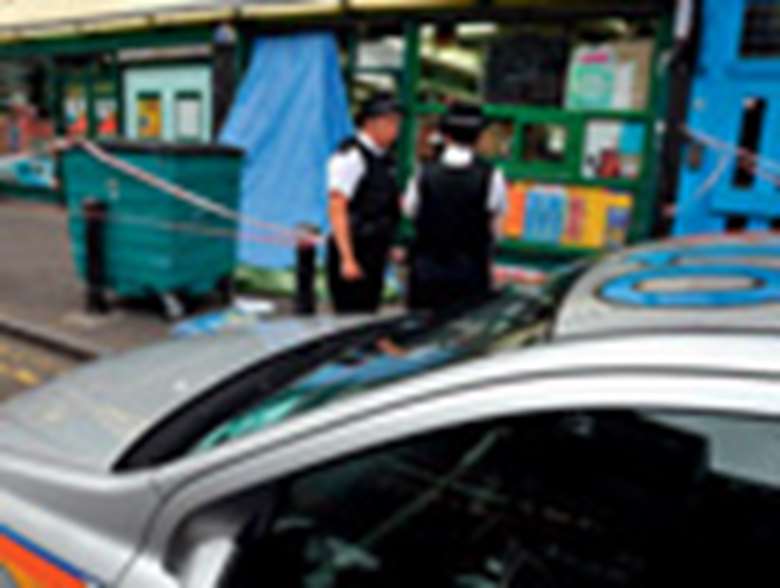Analysis: Youth violence - New offensive on violent youth crime in the capital
Tuesday, August 12, 2008
The new Serious Youth Violence Board will co-ordinate efforts by London's agencies to challenge violence in the capital. But will this initiative prove to be a breakthrough or just another talking shop? Alison Bennett reports.

Gunned down outside a supermarket while shopping for groceries with his brother, 18-year-old Ryan Bravo became London's latest victim of youth violence last week.
Bravo's murder at a Costcutter store in Walworth, south-east London, made him the 22nd teenager to be killed in gang-related violence in the capital this year.
The London Community Safety Partnership (LCSP) is now forming a Serious Youth Violence Board to tackle the wave of attacks in the capital.
Yet efforts by the capital's children's services to tackle the problem have been proving haphazard.
Off the record, the police tell of their frustration at the lack of a co-ordinated response from councils to the problem, pointing out that while they can pick up the pieces, only children and youth services can tackle the root causes.
Talking shops
This echoes the views expressed more diplomatically in the Metropolitan Police Authority's Youth Scrutiny review back in May.
Many services told the review they regarded existing initiatives - such as the Guns, Gangs and Weapons Reduction Board - as little more than talking shops. Lewisham Youth Offending Team said existing work was too reactive and failed to address the underlying problems of violent youth crime such as poverty, poor education and a lack of access to services.
The report concluded: "Despite the awareness that pan-London boards could be useful mechanisms, the overall impression given by adult stakeholders was the boards are remote bodies, which have little or no connectivity to borough or neighbourhood initiatives. In addition, the sheer number of pan- London boards, some of which have similar remits and aims, is confusing and overly complex."
It recommended a streamlining of cross-London initiatives to ensure they are fit for purpose.
Yet, despite such criticism, the decision to form the Serious Youth Violence Board was agreed at a LCSP meeting, to discuss how best to move forward and identify gaps in knowledge. The meeting argued that local authorities need to do more to tackle youth crime and asked London Councils, the organisation representing the capital's local authorities, to start working out a remit for this new board.
But will the new board prove any more effective than existing initiatives, such as the London Youth Crime Prevention Board and the Gangs, Guns and Weapons Reduction Board?
Paul Clark, director of children's services at the London Borough of Harrow, admits councils have had a tendency to think of youth violence as someone else's problem.
A step change
"There does tend to be a case of saying: 'Fred's doing that; well done him'," he says. "But this isn't just a police issue, it's an issue for all of us and I welcome the new board.
"The Youth Crime Action Plan made an expectation of directors of children's services to co-ordinate and lead this activity around youth crime."
Jude Sequeira, the LCSP's secretariat, says the Serious Youth Violence Board will strengthen councils' responses to youth crime.
"We want a step change. We've done some things before with other boards but we want to see in 10 years' time, starting from this, that we've made things better," he says.
The exact remit of the Serious Youth Violence Board won't be decided until a summit in October. However, at the LCSP meeting it was agreed that the board should improve information sharing between agencies, clarify who is accountable for what, do more to tackle the risk factors behind youth crime and improve services' understanding of effective ways to reduce violent crime.
Deciding those final priorities will be crucial if the board is to really change things for the better, believes Clark. "It's a really positive step forward, but it needs to be clear about its priorities and its message," he says. "We don't want different messages from government departments, the Youth Justice Board, London Councils and different boroughs. There has to be some clarity and joining up around it."
One of those priorities needs to be tackling gangs, says Andrew Christie, director of children's services at the London Borough of Hammersmith & Fulham.
"The main area of concern that needs to be addressed is gang membership. They are a real risk to the community and the young people involved," he says.
And, if breaking up the gangs is the priority, then cross-London work to tackle territorialism is a must, says Lorna Hadley, vice chair of the Association of Youth Offending Team Managers.
"Children do cross local authority borders and incidents happen," she says. "We need to work together to make things better. It's not Lambeth's problem or Newham's problem. It's London's problem."
But is there really a need for yet another board? "There's always a danger there may be too many boards," says Eamon Brennan, manager of Westminster Youth Offending Team.
"But in my experience these boards have been offering different things. This one has a real purpose but we have to keep an eye on how many groups of people are meeting and talking about the same issues, as it can get confusing."
And the vital ingredient for delivering on that purpose, he says, is information sharing. "Information sharing is still not good enough," he says.
Early intervention is another ingredient that is likely to play a big part in the board's remit - in particular work with under-fives. "We want to look at what we can do with children aged nought to five and to look at what we need to do differently with that age group," says Sequeira.
Bryan Peake, director of the Youth Justice Trust - a Greater Manchester partnership that helps local services tackle juvenile crime - agrees. "Things like children's centres are very positive but we're talking long-term solutions here and politicians are desperate for something more immediate. I'd be concerned that this is more of an attempt to reassure an increasingly sceptical public than anything else."
But Brennan says the work of the board will be more than that. "We have to keep looking for solutions," he says. "We can't sit back and keep adding to the numbers of young people dying. We have to do more - whether it will be successful I don't know, but we have to try."
THE NATURE OF SERIOUS YOUTH VIOLENCE
At a recent London Community Safety Partnership meeting, the Metropolitan Police's deputy assistant commissioner Rose Fitzpatrick outlined what is already understood about the nature of serious youth violence in the capital.
Her profile of the problem highlighted the following:
- African-Caribbean people are disproportionately represented as victims of serious youth violence
- Most serious violent crime by young people takes place on Saturday and Sunday evenings
- The use of illegal drugs and alcohol is not seen as a significant driver of serious youth violence in London
- It is difficult to identify any correlation between how well funded youth offending teams are and the success of their work in stopping serious youth violence
ACTION IN LONDON
Local authorities
Councils are creating their own responses. Last month Lambeth Council gave the green light to a strategy aimed at stopping young people turning to crime. And last year Islington Council set up a Commission on Young People and Safety, in response to two youth murders.
Police
The Metropolitan Police has launched a number of initiatives, including setting up Every Child Matters teams across the capital and its own youth crime strategy. The Met has also been tackling knife crime in Operation Blunt 2, which involves stop-and-search teams.
Schools
The London Youth Crime Prevention Board has been working behind the scenes to stamp out crime in the city. It has been putting together a safer schools benchmark that will be used to recognise schools that successfully help children make a positive contribution.





